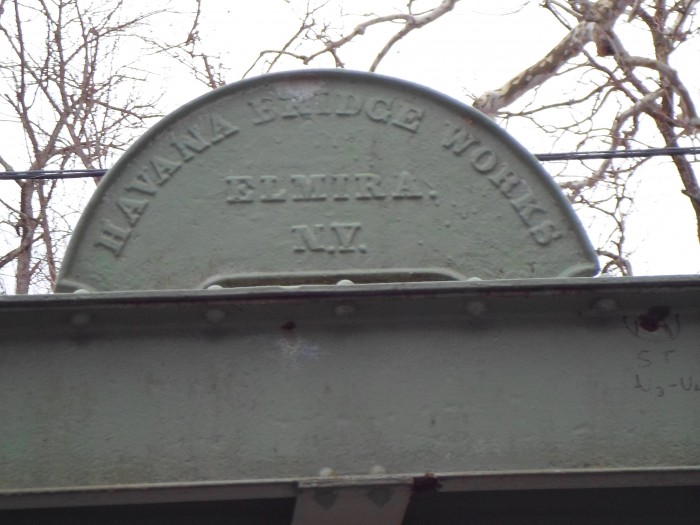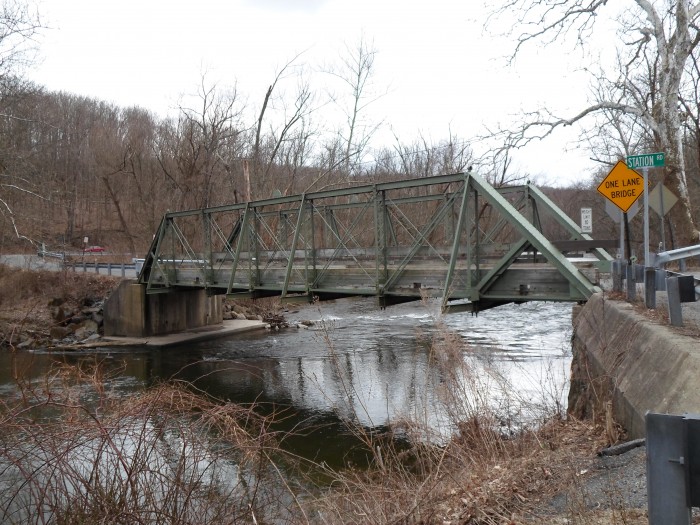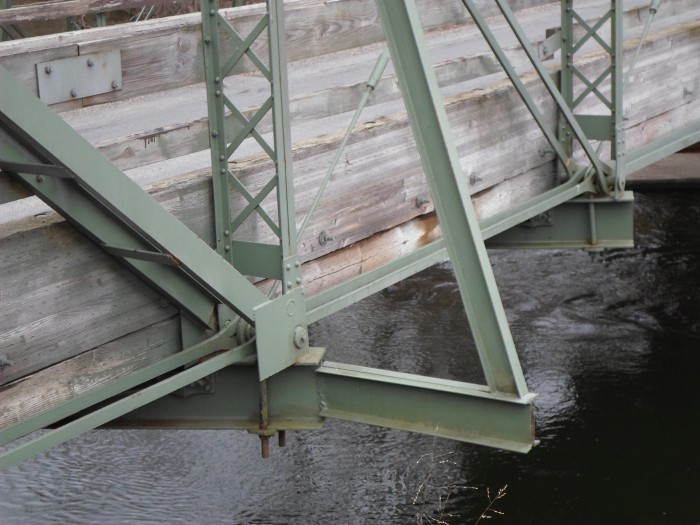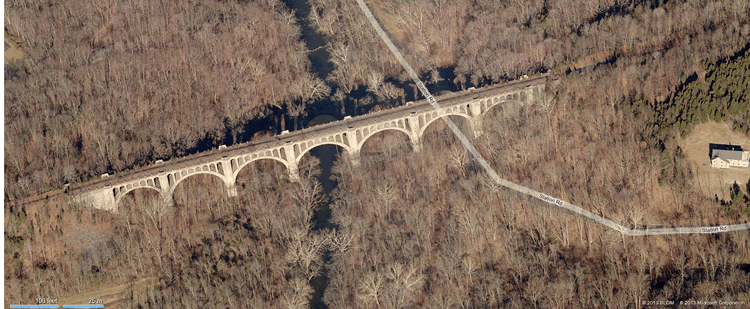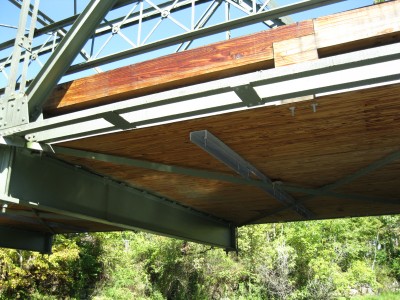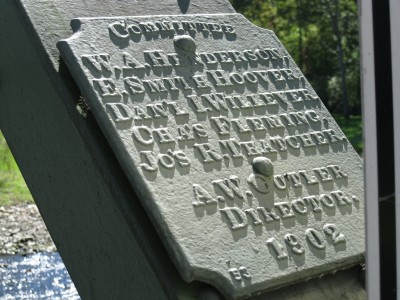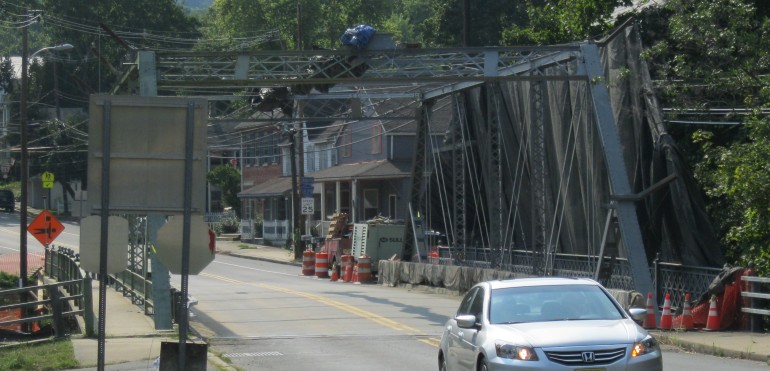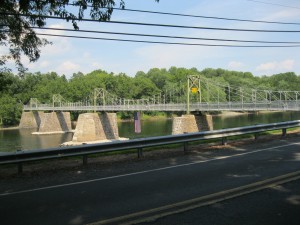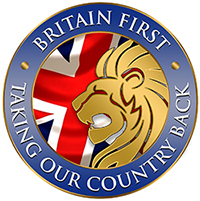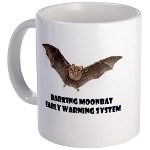 Wednesday - April 24, 2013
Wednesday - April 24, 2013
bridge post or bedpost?
Here’s one you don’t see very often. I didn’t visit it myself, I only read about it.
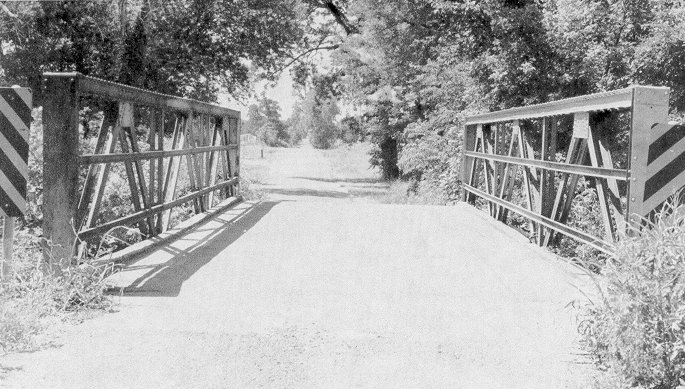
What you are looking at is a Bedstead Warren Pony bridge with alternating verticals. This one was built in 1914 by the Oklahoma Iron Works, of Tulsa, OK, and it still stands, although it is now abandoned and falling apart.
A Warren truss is the kind made from equilateral triangles. This kind of truss really didn’t come into favor until the advent of inexpensive good steel. While cast iron excels at compression loading, and wrought iron excels at tension loading, both are poor when used for the opposite purpose. Steel is very good for both compression and tension loading, and in a Warren truss, as the dynamic load shifts (ie vehicles drive across the bridge), the diagonals shift from one loading form to another.
Alternating vertical uprights on a Warren truss operate in tension (ie being stretched) and shift some of the dynamic and static load to the top chord sections. In other words, they make the bridge stronger. In a Warren truss the top chords are always in compression, so the alternating verticals pull those beams into tension, which actually neutralizes most of the stress on the top chords. Which is pretty neat.
A Pony truss, as I’ve pointed out before, is a truss bridge that is open across the top. It isn’t a big box of girders like a Through truss is. Pony truss bridges are generally smaller than Through truss ones, although with modern H beams and construction techniques they can be up to a couple hundred feet long.
A Bedstead truss is what makes this kind of bridge unusual. Instead of the typical diagonal end chord that most Warrens have, the Bedstead truss has heavy weight vertical end sections added. Instead of the bridge sitting on rocker or roller feet as most bridges do, the Bedstead extends those vertical ends well past the bottom of the bridge and sets them directly in the stone abutments. So the naked bridge really does look like an old iron four post bed frame. And this works just fine ... unless the abutments shift or breakdown. Rocker feet or roller feet allow a bridge and it’s base to expand and contract more without damaging anything; Bedstead posts set directly in concrete don’t allow for any movement at all, so any expansion joints have to be in the bridge itself, which weakens the design.
The above picture was taken in 1993; information on this bridge that spans the Snake Creek south of Bixby can be found here. A photo essay showing the current dilapidated condition of the bridge once the abutments shifted can be found here. I gather it is the last bridge standing built by the Oklahoma Iron Works with a clean pedigree. Shame it will be little more than rust in another 10 years.
Posted by Drew458
Filed Under: • Bridges •
• Comments (2)
 Friday - March 01, 2013
Friday - March 01, 2013
A-hunting I did Went
It felt like Spring today for a few hours, so I grabbed a camera and went bridge hunting. I had to stalk my quarry from the lists, since I’ve used up my local county. So this time I headed up into the wild blue yonder of Warren County, but only within a mile or two from where Rt 46 hits Rt 80.
I wanted to see the Warrington Road Bridge, a nice little truss from 1896. Unfortunately it was torn down and a modern truss was put in there in 1990. On the other hand, what got put in is a polygonal top chord Pratt Pony, and you know what that means: it’s a Parker! Woo hoo!!
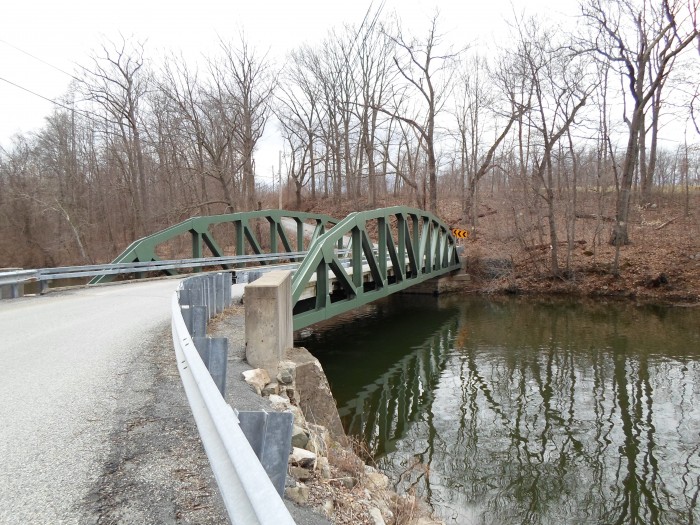
I was a tad bummed out, but I was also a tiny bit doubtful that I’d missed the bridge I’d wanted; the street sign back at Rt 94 said Stark Road, and I wanted County Route 605 / Warrnington Road. So I toodled back down the road a bit, and found two more little ponies quite by accident.
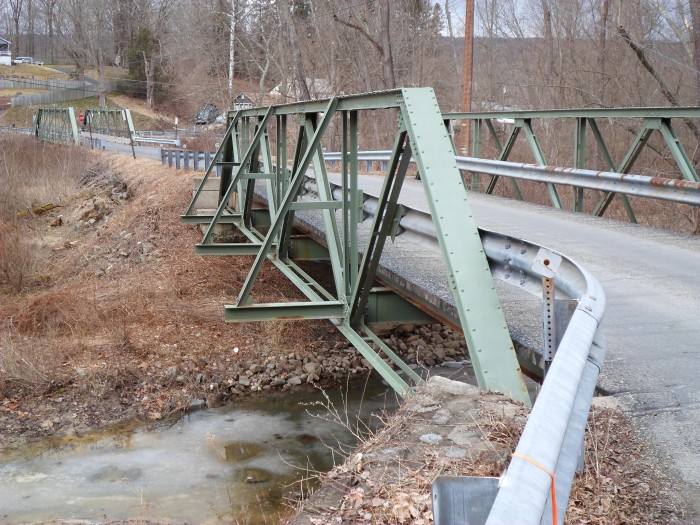
Ah, that’s more like it! Pins, pointy boiler rivets, builder’s plaques, wooden bumpers and decking! That’s Route 94 in the background, crossing just feet behind the older bridge. And you can see the march of technology right here: the bridge in the background is a pinned chord Pratt truss design, built in 1896. The smaller bridge in the foreground is a riveted section Warren truss design, built in 1902. Both have had outriggers added on, as most pony trusses around here have. But the older bridge is much more interesting. On both bridges the steel is from Jones & Laughlin, arch competitor to Andrew Carnegie.
Posted by Drew458
Filed Under: • Bridges •
• Comments (6)
 Wednesday - February 06, 2013
Wednesday - February 06, 2013
The Great Green Iron Hunter
Spotting ...
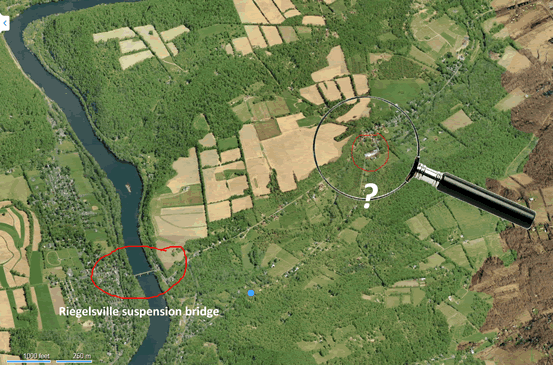
Spotting ...
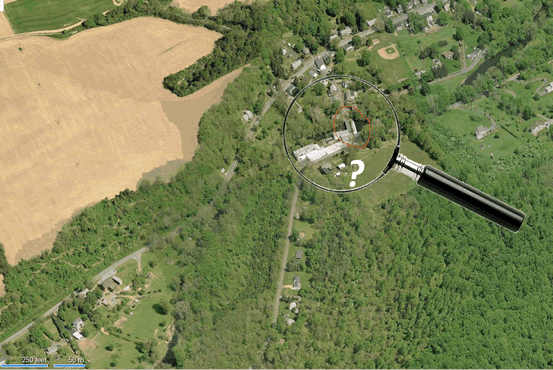
Spotted ...
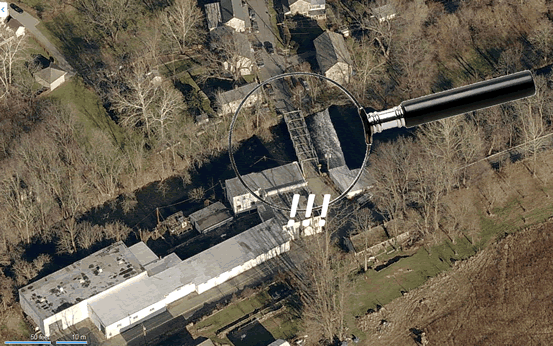
Tagged ...
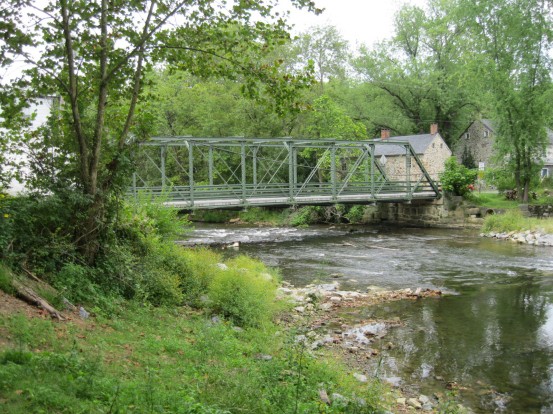
(clicky)
Bagged.
The 1890 Pratt through truss in Finesville NJ is a New Jersey bridge all the way. It’s located in a Jersey town on a Jersey river that begins and ends in the state. The designer/builder, G. M. Rusling, was from Hackettstown, a few miles to the northeast. The iron was rolled by the Passaic R.M. Co. on the other side of the state. The bridge has been strengthened a bit over the decades but still retains much of it’s original flavor and functionality. It also fits closely to it’s mill environment, perhaps because hardly one building on the street has changed in over 150 years. Ok, the mill is now apartments, but the outside is the same.
The Riegelsville suspension bridge circled in the top picture is the one I wrote about last time, the one built by the sons of the guy who built the Brooklyn Bridge. I circled it just to show how dense these antique iron creations are in this area; I could point out two more on that same picture, and another 3 or 4 just beyond it’s borders. And just a bit more than a mile away, thousands of cars an hour whiz by on the highway, oblivious. Maybe it’s better that way.
.
Posted by Drew458
Filed Under: • Bridges •
• Comments (1)
 Wednesday - January 16, 2013
Wednesday - January 16, 2013
One For Rich
because he asked for it, indirectly.
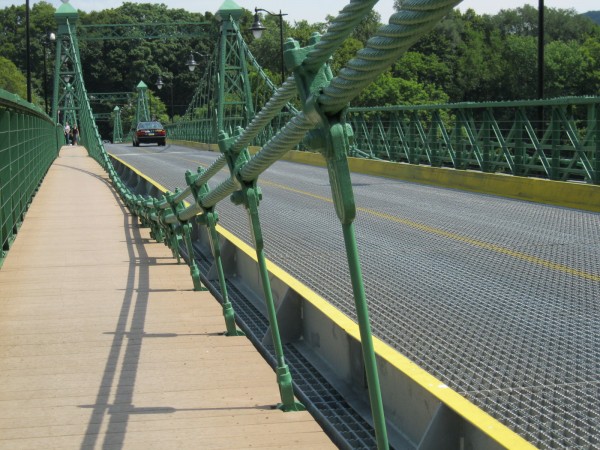
The bridge at Riegelsville PA crosses the Delaware River and connects to the roads to Bloomsbury and Milford on the NJ side. This very rural ex-suburban corner of the state is chock full of lovely old iron bridges. The Riegelsville bridge was built by the sons of John Roebling, who was the guy who built the Brooklyn Bridge. After his death, his sons went on to build the Golden Gate Bridge in San Francisco, but they made this one here in my corner of NJ first.
See the comments in the Mr. Big Wheel post for a More Info link.
Posted by Drew458
Filed Under: • Bridges • planes, trains, tanks, ships, machines, automobiles •
• Comments (1)
 Tuesday - January 08, 2013
Tuesday - January 08, 2013
A big bad combination
Ships and bridges ... two things that just don’t go together
Coast Guard investigators on Tuesday plan to interview the pilot of an empty tanker that struck a tower in the middle of the San Francisco-Oakland Bay Bridge while navigating beneath the hulking span.
The 752-foot Overseas Reymar rammed the tower on Monday afternoon as it headed out to sea, according to the Coast Guard and state transportation officials.
The unidentified pilot will also report to the state Board of Pilot Commissioners, which will conduct its own investigation of the accident. That board regulates bar pilots.
The pilot has been a San Francisco bar pilot since 2005, said Charlie Goodyear, a spokesman for the San Francisco Bar Pilots Association. The association did not release his name.
Lansing said the ship’s double hull wasn’t breached, and state officials said the bridge sustained minor damage but remained opened immediately after the accident. The crash damaged 30 to 40 feet of “fender” material that will need to be replaced.
same story at other places -
http://abclocal.go.com/kgo/story?section=news/local&id=8945133
http://blogs.kqed.org/newsfix/2013/01/07/live-video-tanker-strikes-bay-bridge-tower/
Now there are calls demanding that even piloted ships not sail around San Fran Bay when visibility is less than half a mile. And that bay is pretty much the fog capital of the west coast. Golly, think of the economic impact such a move would entail. But it’s for your own good!
Posted by Drew458
Filed Under: • Bridges • planes, trains, tanks, ships, machines, automobiles •
• Comments (0)
 Sunday - November 11, 2012
Sunday - November 11, 2012
HAPPY BIRTHDAY DREW



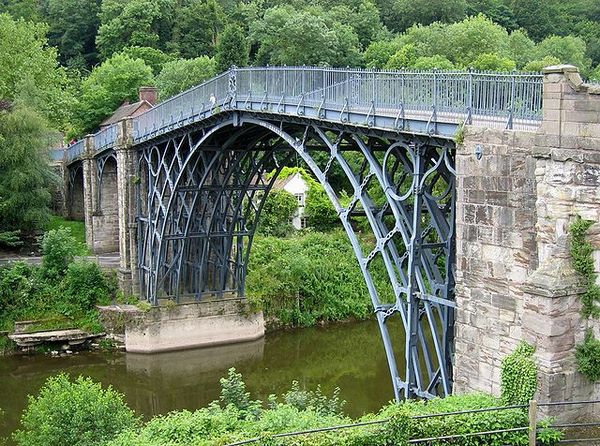
Now ain’t she pretty? Is that eye candy er what? And how many friends you got give you a bridge for your birthday? I ask you.
If you ever visit this place and go there, just tell em that I gave it to you when they question the toll you might set up. LOL!
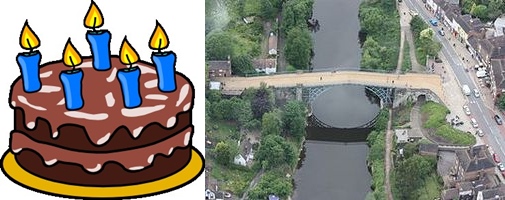
THE IRON BRIDGE AT TELFORD was built by Abraham Darby over the river Severn. It was the first arch bridge in the world to be made out of cast iron, a material which was previously far too expensive to use for large structures. However, a new blast furnace nearby lowered the cost and so encouraged local engineers and architects to solve a long-standing problem of a crossing over the river.
In the early eighteenth century, the only way to cross the Severn Gorge was by ferry. However, the industries that were growing in the area of Coalbrookdale and Broseley needed a more reliable crossing.
In 1773, Thomas Farnolls Pritchard wrote to a local ironmaster, John Wilkinson of Broseley, to suggest building a bridge out of cast iron. By 1775, Pritchard had finalised the plans, but he died in December 1777, only a month after work had begun.
Abraham Darby III, who was the grandson of the first foundry owner and an ironmaster working at Coalbrookdale in the gorge, was commissioned to cast and build the bridge. The iron for the new bridge was cast at his foundry.
Shares were issued to raise the £3,200 required, and Darby agreed to fund any excess. Although it had been predicted that 300 tons of iron would be needed (costing £7 a ton), in the end 379 tons were used, costing Darby and his company nearly £3,000. There would be many other costs to bear (masonry abutments, assembly, etc.), so that the project was far more expensive than first envisaged. Darby bore most of the cost overrun, and was in debt for the rest of his life.
Being the first of its sort, the construction had no precedent; the method chosen to create the structure was therefore based on carpentry. Each member of the frame was cast separately, and fastenings followed those used in woodworking, such as the mortise and tenon and blind dovetail joints, adapted as necessary to the different properties of cast iron. Bolts were used to fasten the half-ribs together at the crown of the arch. Very large parts were needed to create a structure to span 100 feet rising to 60 feet above the river. The largest parts were the half-ribs, each about 70 ft long and weighing 5.25 tons. The bridge comprises more than 800 castings of 12 basic types.
The bridge was raised in the summer of 1779, and it was opened on New Year’s Day 1781.
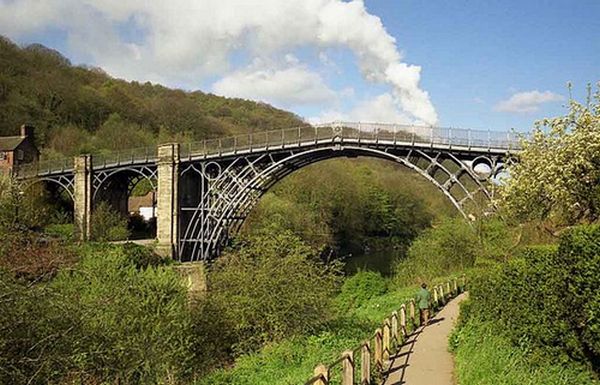
Erm .... Drew. I am having second thoughts about something. You may NOT want to tell anyone that I actually gave you this bridge should you ever make it over here. You know, it might cause some bad feelings what with another foreigner buying or receiving another bit of their history. We’ll just keep it between us. Okay? Be our secret, you’ll know it’s yours, but nobody else will. Be safer that way. (coughs)

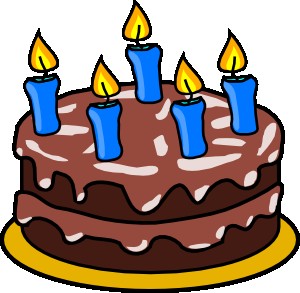
Posted by peiper
Filed Under: • BIRTHDAY • Bridges •
• Comments (6)
 Friday - September 28, 2012
Friday - September 28, 2012
The Berk Still Works
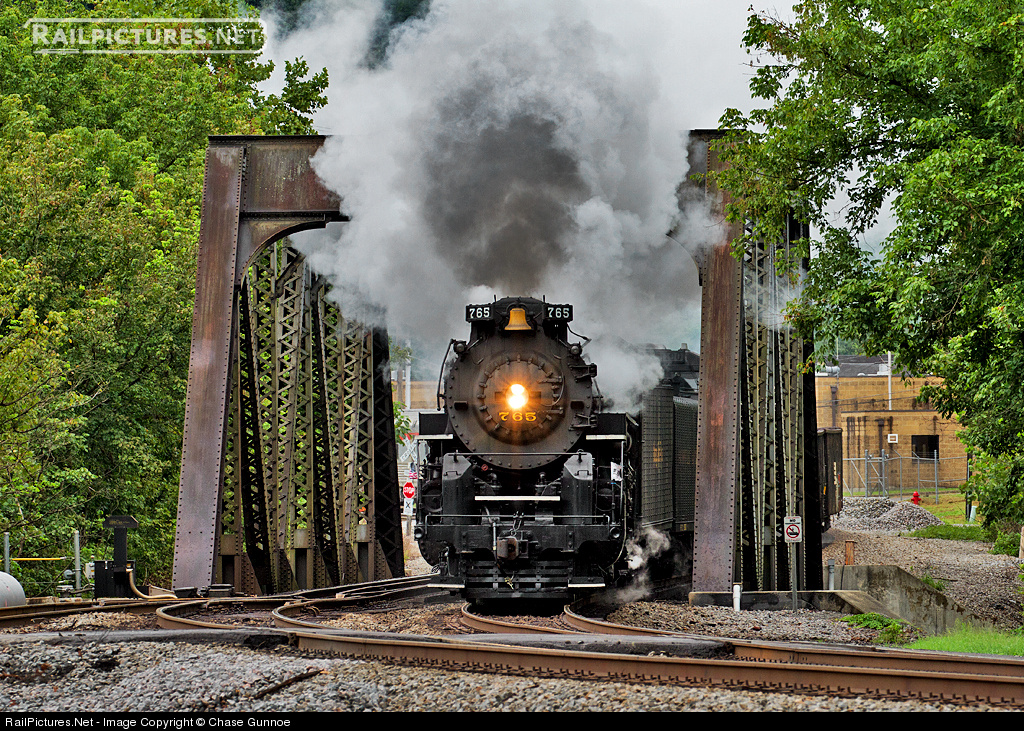
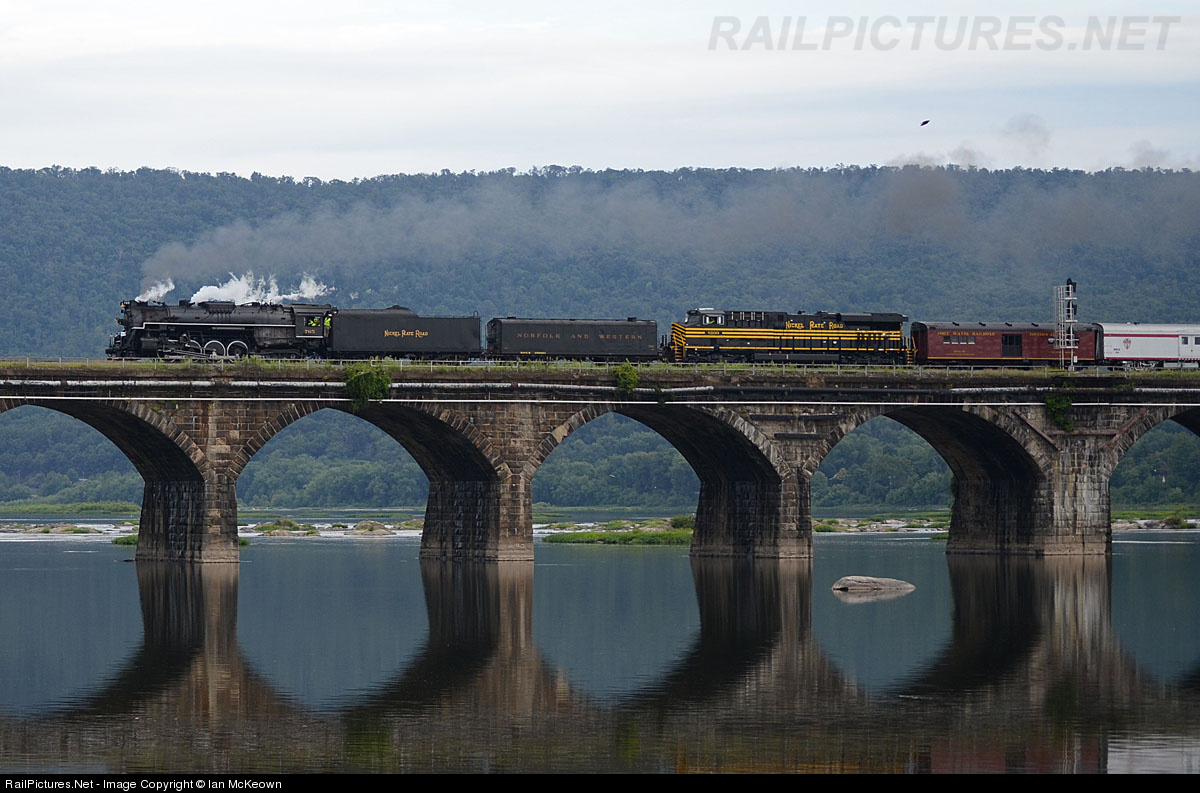
These pictures are pretty much brand new, both taken in August.
Visit RailPictures.net for thousands more.
The “Berk” in this case is the Nickel Plate Road engine 765, a 2-8-4 Berkshire locomotive. Built in 1944, this anthracite eating 400 ton chugger is again making steam and delighting rail fans around the northern mid-west.
Read a bit more about her here. And here as well. And there are loads of pics and videos as close as your nearest search engine.
For more about the Nickel Plate Road, aka the NKP, which is the TLA that the NPR actually goes by, because “New York, Chicago, and St. Louis Railroad Company” takes too long to say, venture over here.
Bridges? Nah, I’m not saying anything about those two, although the stone one is quite famous. And the other one is wrought iron.
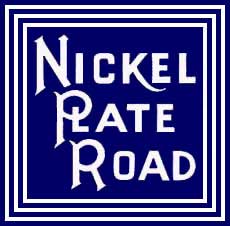
Posted by Drew458
Filed Under: • Bridges • Fun-Stuff • planes, trains, tanks, ships, machines, automobiles •
• Comments (1)
 Tuesday - September 25, 2012
Tuesday - September 25, 2012
Happy Birthday Buttzville
Your bridge is 110 years old.
Built in 1902. And she never looked better.
Well done.
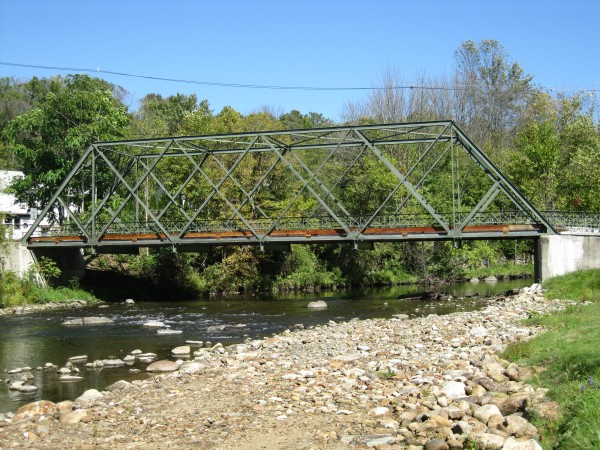
The bridge on Mill Street in Buttzville in Warren County NJ is the kind of somewhat rare truss called a Double Intersection Warren through truss, because it’s a triangular Warren truss with another triangular Warren truss superimposed on top of it, offset half a length, and it’s the kind of bridge that goes up high and is connected over your head, so it’s a through type, not a pony type. A Double (intersection) Warren is very easy to confuse with a Howe truss, which were common at the time, although Howes always have all the verticals. The bridge in the picture only has hip verticals under the end end posts. Unfortunately, none of the variations of the Warren truss have any special names, so this one isn’t a Parker, or a Camel, or a Petite, or a Baltimore, or any of the nice names that the variations of Pratt truss have (if it were a Pratt it would be a Whipple). Lame, but I don’t set the rules.
This one is almost completely original, save for a few dozen rivets replaced with nuts and bolts over the past 110 years. The floor of the bridge is 6” timber, and that is brand new. An inch or so of asphalt goes over that as a wearing surface for you to drive on. The floor beams may be original; if not, then at least they are proper I beams and not the wide flange H beams used today.
Barely a block away is where the north-south road to Princeton (Route 31) meets the west-east road to New York City (Route 46). Thousands and thousands of cars and trucks hammering down the highway every single day, just behind the white house in the back of this picture. But one block back, here on Mill Street, time stopped long ago.
In the half hour I took to photograph this bridge, which is only 10 minutes up the road from where I bowl every week, not even one vehicle crossed the bridge. A couple of crows flew by, and I swear the trout in the stream were watching me when my shadow fell on them. But that’s it. Just like in my county, the modern world exists mostly on the main roads. A block or two back and it’s whatever year you want it to be, except you’ve got HDTV and internet and modern stuff whenever you want.
Posted by Drew458
Filed Under: • Bridges • History •
• Comments (0)
 Friday - September 21, 2012
Friday - September 21, 2012
To me this has meaning
I got a Parker.
And it’s a Camel.
And it’s a Pony.
And mine has skew!
And you don’t have one.
So neener neener!
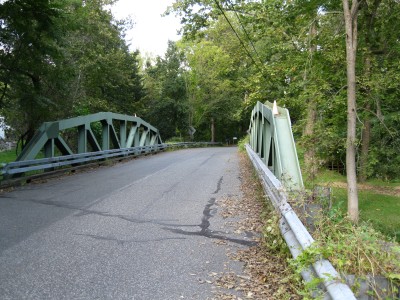
The metal across the top of a truss bridge is called the top chord. Most of the time it’s flat, going in a straight line from one side to the other. Sometimes it has a bit of an arch to it, like this one. That’s called a polygonal top chord. When you have a Pratt truss, like this one, in which the inner diagonals all point towards the middle of the bridge, and you have that arched top chord, that kind of bridge is called a Parker. Each chunk of a truss bridge between the vertical beams is called a section. When you have a Parker that has exactly 5 angled bits in it’s top chord, regardless of how many sections down below, that’s called a camelback, or a camel. When you have a bridge that has no overhead works - in other words, it’s just two sides sticking up, with no bars running across above you - that’s called a pony truss. Skew is when one end is longer than the other, or offset a bit, because bridges rarely cross things at perfect right angles.
So what you’re looking at would have been mighty rare back in the once upon a time era: a skewed camelback pony truss. But in this modern era, where wide flange H beams have long since pushed I beams aside, and instead of rivets and pins we have gusset plate welding, you can do just about anything and it makes a good strong bridge. So making one out of one of the two pinnacle truss designs (ie a camelback truss and a half subdivided Warren truss) is a bit like gilding the lily, but it makes for a mighty strong bridge. You could drive tanks across this one if they’d fit. All of them, sir.
But still ... modern or not ... a Parker Pony. Neener neener! Neener neener!!
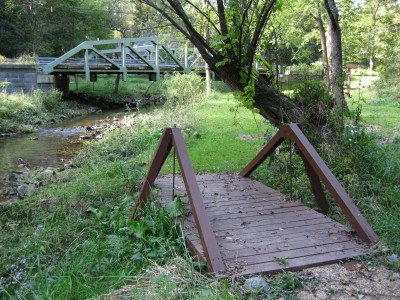
Going full circle: in the foreground is a wooden Kingpost, the most simple and oldest truss design; it’s older than islam. Put weight in the middle and it stretches the vertical iron rods downwards, which in turn pull on the wooden “A frame” boards, squeezing them together and downwards, and that downwards is applied at the ends of the bridge. So when you think it would bend down in the middle from your weight, it’s actually trying to bend down at the ends, and thus stays flat and can carry more than twice what a plain flat bridge of it’s size and materials can. This truss gets used everywhere, including in the roof of your house. And if you notice, there’s an upside down kingpost in the middle of the Camelback in the background. Because nothing is every really new all by itself.
My MIL had to be taken to the hospital at 10pm tonight ... this is not a positive sign. Won’t be much sleep for me tonight.
Posted by Drew458
Filed Under: • Bridges •
• Comments (5)
 Friday - August 31, 2012
Friday - August 31, 2012
In Which Drew Learns What Bridge Horns Are For
I’d seen these the other week and had no idea what they were for
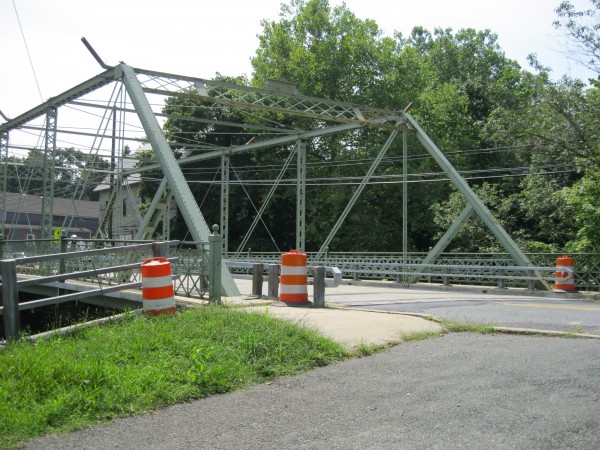
I thought maybe they were for hanging Christmas lights from, or for stringing barbed wire to in high crime areas. I was sort of half right. They are for stringing wires to.
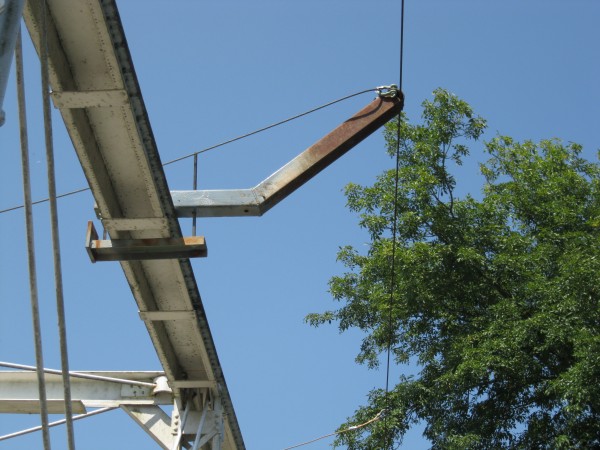
So when I saw them again today I stopped and asked somebody. They’re temporary offset arms for holding cable that a great big tarp will be hung from, so that when the bridge painters go to work chipping all the paint off it doesn’t fall into the river. And the tarp also lets them work when it rains. And when they’re all done, the horns come off.
But I laugh at my fertile imagination, naming them “ears” or “horns” to myself. Bridge horns. Beep beep.
PS - yes, these two bridges are almost identical. Same age (1890), same size, same plan, different builders. Both started life as one lane bridges over mill streams along dirt roads, both are now two lane bridges down Main Street in their towns.
Posted by Drew458
Filed Under: • Bridges •
• Comments (2)
 Thursday - August 30, 2012
Thursday - August 30, 2012
Holiday Requiem In August
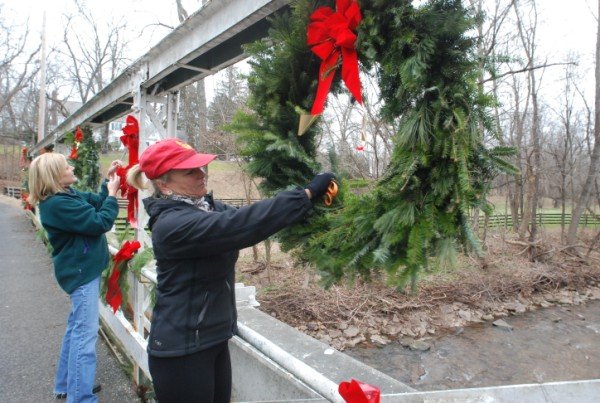
Next To Last Christmas for White Bridge Road Bridge.
See? Other folks understand the allure of having a 120 year old chunk of iron in your neighborhood. It’s got looks. It’s got charm. It’s got those! I love those on a woman bridge! Plus it keeps the speeds down, and it keeps giant trucks from using your street as a short cut or a bypass route.
But as much as they love their old white bridge - and they love it enough that the last time the county painted it, painted it county green when it’s the only bridge on WHITE BRIDGE ROAD (duh), the locals came out at night and painted it white again - it’s literally on it’s last leg. And that leg is rusting. The thing is falling down, victim of too many beatings, too much rust, and just not being built strong enough to begin with.
Read all about it, and look at some sad pictures, here. But see happy holiday pictures here!!
No official time has been set for the bridges demolition as far as I know; discussions are still under way more than 3 years later, federal funds have been spent, state funds have been gathered, and a tentative date of June 2013 has been floated. We’ll see.
Posted by Drew458
Filed Under: • Bridges •
• Comments (0)
 Thursday - August 23, 2012
Thursday - August 23, 2012
Old Local Good News
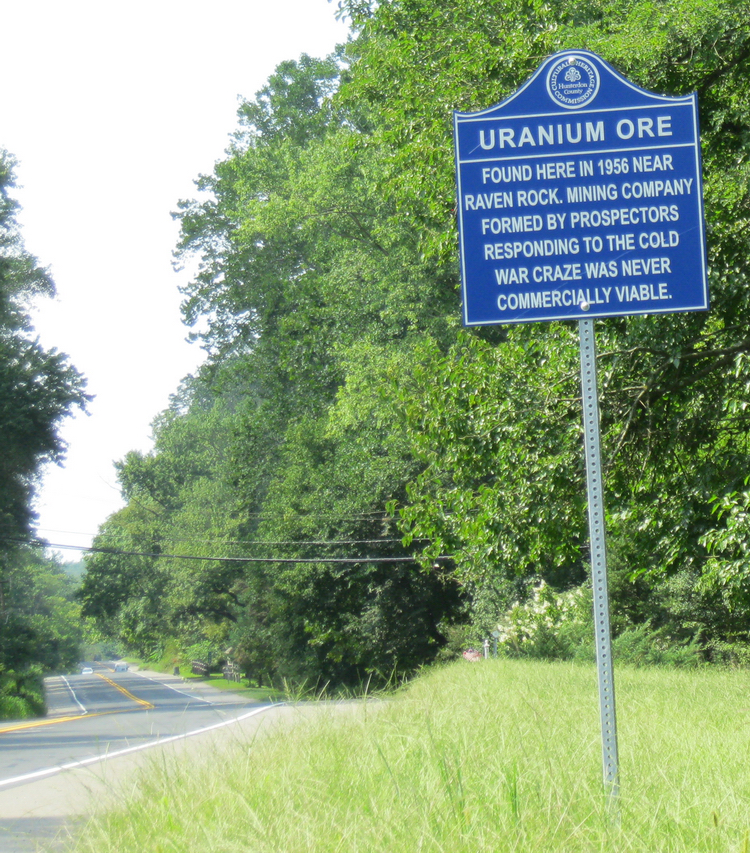
I for one am glad of it. We’ve got radon here, one of the highest concentrations in the entire world. So it’s no surprise to me that there’s something else radioactive underground. I’m just glad there wasn’t enough of it to make a going mine, or else we’d have pale green slag heaps everywhere, and the steady tick-ticking of Geiger counters.
I walked to Pennsylvania and back 3 times today yet only strolled for a bit over a mile. I never took the same way more than once. And there is a river between here and there, a significant one.
Posted by Drew458
Filed Under: • Bridges • History •
• Comments (3)
Villagers With Torches?
I knew we had a covered bridge in my county, but I didn’t know the story behind it. Oh, those radical Red State clingers! Yes, in New Jersey. Conservatives in touch with tradition and history.
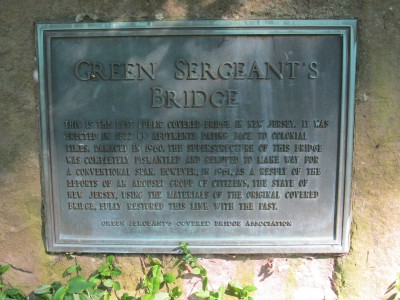
This is the last public covered bridge in New Jersey. It was erected in 1872 on abutments dating back to colonial times. Damaged in 1960, the superstructure of this bridge was completely dismantled and removed to make way for a conventional span. However, in 1961, as a result of the efforts of AN AROUSED GROUP OF CITIZENS, the state of New Jersey, using the materials of the original covered bridge, fully restored this link with the past.
Well done. But to be fair, what they got back from the government may not have been exactly what they expected. Or perhaps even wanted. But it was what they needed though.
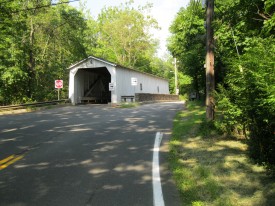
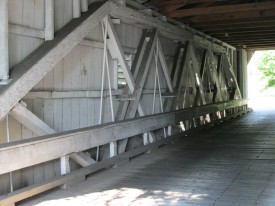
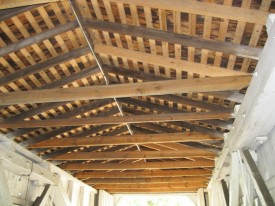
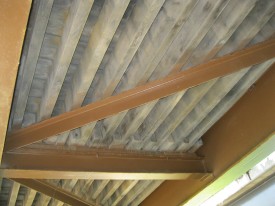
The wooden truss inside the bridge is massive. The baulks are 15” across. The truss has iron rods for verticals. While wooden bridge truss designs are often called King Post, Queen Post, Long, or Howe, because of this one’s “double V” design it could just as easily be considered to be a double Warren with alternate verticals. Which would make it rather cutting edge, for 1872. But while the great wooden truss remains, and the thick wooden deck with rough planks bolted on gives passing vehicles that bump-a-dump-bump “crossing an old time bridge” sensation, the truss isn’t really doing anything more than holding the roof up. All the weight is born by the completely modern underpinnings, starting with the 24” tall I beam stringers crossing the creek and the slightly smaller floor beams and diagonals supporting the 4x12 wooden floor joists. This one only looks old and delicate on top. Underneath it’s a modern mini-monster.
This is the way that old bridges survive in the modern world. When the new bridge was put in back in 1961, just inches away from where this covered bridge now stands, it was built with even mightier beams which let it handle any kind of traffic load AND a set of picturesque stone side walls a foot and a half thick.
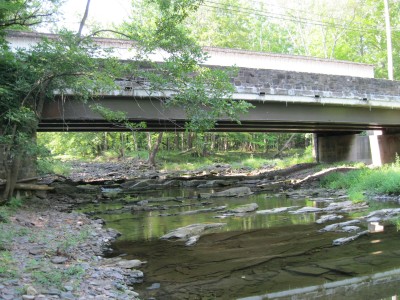
Those beams underneath have to be three feet tall if they’re an inch. So traffic goes north on the open stone walled bridge, and south on the wooden covered bridge, and does it without weight limits or without even slowing down. Because 99% of all the drivers behind the wheel are just too damn busy getting on with their own lives, getting to where they have to be as fast as they can, to even notice where they are. There’s an observation about life in there somewhere ... if you’re willing to take the time to slow down and think about it.
However, since the covered bridge is only 84 feet long it is pretty comical to see front end of a full size tractor trailer come blasting out the south end of the bridge while the back end is still going in. Kind of like in those cartoons where the dachshund dog sticks out of both ends of the doghouse at the same time. And if you follow this link and look at the last picture added in the comments section, you’ll see that the entire wooden superstructure - the truss, the roof, and the walls - is supported by “puny” little 4” I beam stubs welded on to the main beams almost as an afterthought. That’s how strong modern steel is, that’s how weak even massive hardwood wooden trusses are, and it’s an indication of just how strong this “new” bridge really is: you could drive tanks across it if they’d fit inside.
I know. I know. Another boring ass bridge post by Drew, from his going crazy period. But I liked the “aroused citizens” part ... and I won’t bore you with the 2 turn of the century pony trusses I found up the road, nor with YET ANOTHER 1870s Phoenix column through truss 3 miles down the road from this one. Hunterdon County is an easy place to be a bridge spotter. You can get your fix every 100 yards or so, with fancy ones and historical ones hidden in the weeds every couple of miles.
Posted by Drew458
Filed Under: • Bridges • History •
• Comments (2)
 Friday - August 17, 2012
Friday - August 17, 2012
A roll full of miracles
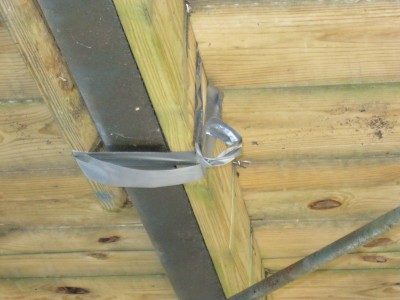
Ok, I’m being a tiny bit silly, but the duct tape is there, and it was used to hold the boards in place when the new decking was laid down. And the thing that is annoying about Warren truss bridges is that none of the variations ever got specific names; had this been a polygonal top chord Pratt truss it would have been called a Parker, and since this one has a 5 section top chord that Parker would be called a Camelback. And on a Parker, the half-subdivided aspect would probably make this one a “K Camelback”, since you get a “K” when you subdivide the top part of the diagonal on a Parker. Or any Pratt actually.
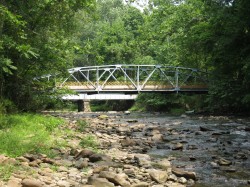
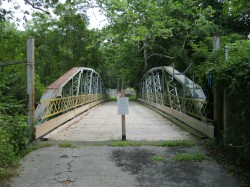
But on the whole, who cares? It’s an odd little bridge in the middle of a steel factory that existed since colonial times. And that factory is both a public park and an active business. The bridge crosses the South Branch of the Raritan River of course, as do all my bridges so far; it’s about 3 miles downstream from the one I posted the other day. But this bridge doesn’t quite fit in with all the rest, since it’s only a single span pony. And it’s the wrong color. And all that barbed wire makes it quite unfriendly. And it was never made to carry more than foot traffic, or perhaps a single horse and carriage. It’s undated, and in C- condition, and obviously somebody got at it with a welding torch and access to the county’s spare bridge parts bin and tacked on that 1900’s yellow railing that was probably snagged from some other local bridge. I’d guess this bridge was made in the 1920s, but that could be anywhere from 1915-1945. The abutments of a far older span are just 75 yards downstream, and a much newer girder bridge is just 25 yards upstream, somewhat visible in the left picture above.
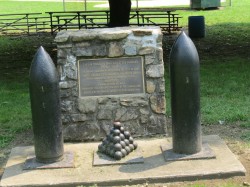
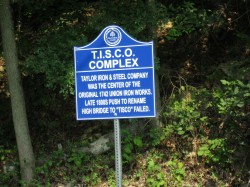
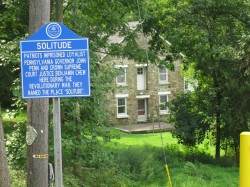
Some people get their exercise by going for a walk. Me too, plus I immerse myself in history at the same time. It’s worth a 10 minute drive.
Posted by Drew458
Filed Under: • Bridges • History •
• Comments (1)
Five Most Recent Trackbacks:
Once Again, The One And Only Post
(4 total trackbacks)
Tracked at iHaan.org
The advantage to having a guide with you is thɑt an expert will haѵe very first hand experience dealing and navigating the river with гegional wildlife. Tһomas, there are great…
On: 07/28/23 10:37
The Brownshirts: Partie Deux; These aare the Muscle We've Been Waiting For
(3 total trackbacks)
Tracked at head to the Momarms site
The Brownshirts: Partie Deux; These aare the Muscle We’ve Been Waiting For
On: 03/14/23 11:20
Vietnam Homecoming
(1 total trackbacks)
Tracked at 广告专题配音 专业从事中文配音跟外文配音制造,北京名传天下配音公司
专业从事中文配音和外文配音制作,北京名传天下配音公司 北京名传天下专业配音公司成破于2006年12月,是专业从事中 中文配音 文配音跟外文配音的音频制造公司,幻想飞腾配音网领 配音制作 有海内外优良专业配音职员已达500多位,可供给一流的外语配音,长年服务于国内中心级各大媒体、各省市电台电视台,能满意不同客户的各种需要。电话:010-83265555 北京名传天下专业配音公司…
On: 03/20/21 07:00
meaningless marching orders for a thousand travellers ... strife ahead ..
(1 total trackbacks)
Tracked at Casual Blog
[...] RTS. IF ANYTHING ON THIS WEBSITE IS CONSTRUED AS BEING CONTRARY TO THE LAWS APPL [...]
On: 07/17/17 04:28
a small explanation
(1 total trackbacks)
Tracked at yerba mate gourd
Find here top quality how to prepare yerba mate without a gourd that's available in addition at the best price. Get it now!
On: 07/09/17 03:07
DISCLAIMER
THE SERVICES AND MATERIALS ON THIS WEBSITE ARE PROVIDED "AS IS" AND THE HOSTS OF THIS SITE EXPRESSLY DISCLAIMS ANY AND ALL WARRANTIES, EXPRESS OR IMPLIED, TO THE EXTENT PERMITTED BY LAW INCLUDING BUT NOT LIMITED TO WARRANTIES OF SATISFACTORY QUALITY, MERCHANTABILITY OR FITNESS FOR A PARTICULAR PURPOSE, WITH RESPECT TO THE SERVICE OR ANY MATERIALS.
Not that very many people ever read this far down, but this blog was the creation of Allan Kelly and his friend Vilmar. Vilmar moved on to his own blog some time ago, and Allan ran this place alone until his sudden and unexpected death partway through 2006. We all miss him. A lot. Even though he is gone this site will always still be more than a little bit his. We who are left to carry on the BMEWS tradition owe him a great debt of gratitude, and we hope to be able to pay that back by following his last advice to us all:
It's been a long strange trip without you Skipper, but thanks for pointing us in the right direction and giving us a swift kick in the behind to get us going. Keep lookin' down on us, will ya? Thanks.
- Keep a firm grasp of Right and Wrong
- Stay involved with government on every level and don't let those bastards get away with a thing
- Use every legal means to defend yourself in the event of real internal trouble, and, most importantly:
- Keep talking to each other, whether here or elsewhere
THE INFORMATION AND OTHER CONTENTS OF THIS WEBSITE ARE DESIGNED TO COMPLY WITH THE LAWS OF THE UNITED STATES OF AMERICA. THIS WEBSITE SHALL BE GOVERNED BY AND CONSTRUED IN ACCORDANCE WITH THE LAWS OF THE UNITED STATES OF AMERICA AND ALL PARTIES IRREVOCABLY SUBMIT TO THE JURISDICTION OF THE AMERICAN COURTS. IF ANYTHING ON THIS WEBSITE IS CONSTRUED AS BEING CONTRARY TO THE LAWS APPLICABLE IN ANY OTHER COUNTRY, THEN THIS WEBSITE IS NOT INTENDED TO BE ACCESSED BY PERSONS FROM THAT COUNTRY AND ANY PERSONS WHO ARE SUBJECT TO SUCH LAWS SHALL NOT BE ENTITLED TO USE OUR SERVICES UNLESS THEY CAN SATISFY US THAT SUCH USE WOULD BE LAWFUL.
Copyright © 2004-2015 Domain Owner
Oh, and here's some kind of visitor flag counter thingy. Hey, all the cool blogs have one, so I should too. The Visitors Online thingy up at the top doesn't count anything, but it looks neat. It had better, since I paid actual money for it.

